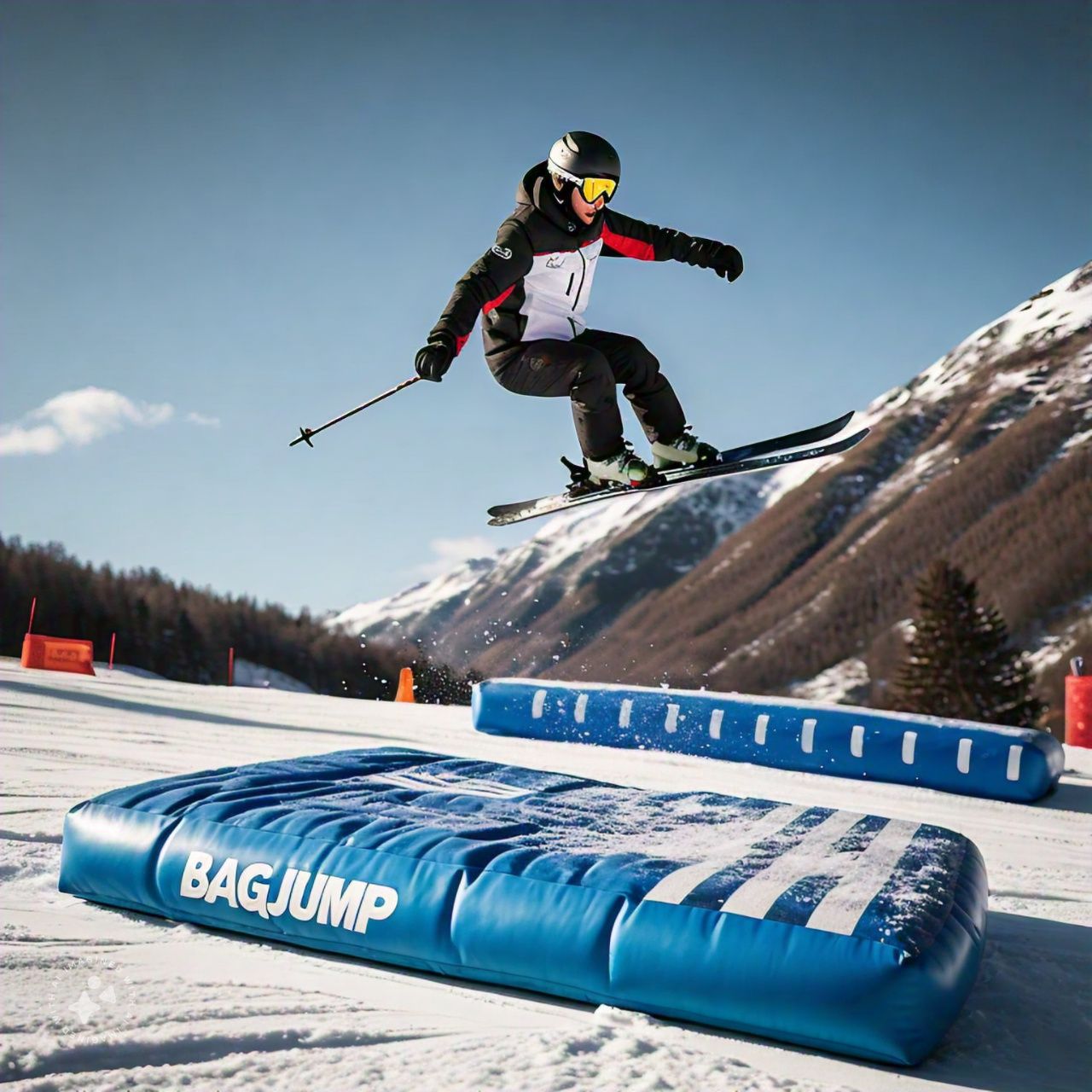Skiing and snowboarding with a Bagjump, or freestyle skiing airbag, is a type of freestyle skiing in which jumpers execute aerial maneuvers onto a big cushion filled with air, which is called a Bagjump. Bagjump skiing offers the opportunity to skiers so they can hone their aerial skills without having to worry about making hard landings on ice or snow.
Athletes can push themselves and try new stunts without worrying about getting hurt. Invest in your resort to make it a top-notch training facility for teams and professional riders, or use it to give visitors to your ski resort an exciting and safer experience.
Even in the summer, you can make money year-round by offering exhilarating tubing experiences with their unique Snow Landing Airbags. For athletes of all skill levels, the BAGJUMP Landing Bags are fantastic. It truly works for those who wish to advance from amateur to world-class status.
Psychological Challenges Athletes Face When Performing on Bagjumps
By cultivating a positive mindset, managing pressure effectively, and maintaining focus and composure under pressure, athletes can maximize their performance and achieve success in freestyle skiing. Performing complex maneuvers on Bagjumps can present athletes with several psychological challenges that they must overcome to succeed. Here are some key challenges:
-
Fear of Failure and Injury
One of the most prevalent psychological challenges for athletes with freestyle Bag jump ski training is the fear of failure and injury. When attempting high-risk maneuvers, such as multiple flips or spins, athletes may grapple with the fear of not executing the maneuver correctly or suffering a serious injury upon landing.
-
Pressure to Perform
Athletes in freestyle skiing often face significant pressure to perform at a high level, especially during competitions where they compete against others or strive to achieve personal best. The fear of disappointing others or falling short of expectations can create added stress and anxiety, making it challenging for athletes to focus on their performance and execute their maneuvers effectively.
-
Mental Blocks
Another psychological challenge for athletes in freestyle skiing is the occurrence of mental blocks or overthinking during the execution of complex maneuvers. Athletes may become overwhelmed by the technical aspects of the jump or fixate on potential hazards or mistakes, leading to indecision and hesitation. Overthinking can disrupt the flow of movement and hinder the athlete’s ability to maneuver instinctively, increasing the risk of errors or accidents.
-
Managing Emotions
Freestyle skiing is an adrenaline-fueled sport that requires athletes to manage their emotions effectively to perform at their best. While adrenaline can enhance focus, reaction times, and physical performance, it can also lead to heightened anxiety, nervousness, or even panic if not properly controlled.
Key Strategies Athletes Use to Ensure Safe Landings on Bagjumps
Ensuring safe and effective bag jump landing is crucial for athletes in maintaining their well-being and performance. Here are some key techniques and strategies that athletes employ:
-
Proper Body Positioning
Athletes focus on maintaining proper body positioning throughout the jump and landing. This includes keeping their weight centered and balanced, with knees slightly bent and arms positioned for stability and control. By maintaining a strong and stable posture, athletes can absorb impact more effectively and reduce the risk of injury upon landing.
-
Spotting the Landing
Athletes train themselves to spot the landing area as early as possible during their descent. By visually identifying the landing spot and gauging their trajectory relative to it, athletes can make real-time adjustments to their body position and timing to ensure a precise and controlled landing. Spotting the landing also helps athletes anticipate any changes in terrain or conditions that may affect their approach.
-
Maintaining Rotation Control
For maneuvers involving spins or flips, athletes focus on maintaining control over their rotation speed and axis. By controlling the rate and direction of rotation through precise movements and adjustments, athletes can ensure that they land squarely on the Bagjump surface without over-rotating or under-rotating. Proper rotation control minimizes the risk of landing off-axis, which can lead to instability and potential injury.
-
Absorbing Impact with Flexion
Athletes utilize their lower body muscles to absorb the impact of the landing upon contact with the Bagjump surface. This involves flexing the knees and hips upon landing to act as shock absorbers, dissipating the force of impact and reducing strain on the joints and ligaments. By absorbing impact with controlled flexion, athletes can land more softly and smoothly, reducing the risk of injury and fatigue.
Sum Up
When it comes to freestyle skiing with a Bagjump, athletes adopt an organized strategy, gradually improving their skills and confidence over time. Once they gain experience and proficiency, they progress to more complex tricks from basic ones. Athletes can minimize the risk of injury from attempting high-risk tricks too soon by developing a strong technical foundation by mastering foundational skills before moving on to more difficult maneuvers, especially with a Bagjump.
